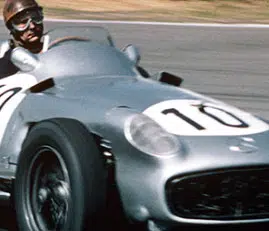1977 F1 World Championship
- 1977
- F1
- F1 World Championship
Mario Andretti’s win at the 1976 Japanese Grand Prix had signalled the resurgence of Lotus, and for the new season team owner Colin Chapman introduced a concept that would change the sport. The new Lotus 78 “wing car” used the bodywork on either side of the cockpit to channel air under the car, generating downforce that radically boosted cornering speeds. Sliding “skirts” which extended from the bottom of the bodywork to the track surface sealed these sidepods.
“Ground effect,” as it was also known, was not a new idea but Lotus’s design team, including Peter Wright and Ralph Bellamy, made it work. Mid-season engine failures robbed Andretti of vital points and the championship, but he won four times while team-mate Gunnar Nilsson scored his first victory in the wet Belgian GP.
The result of the season’s first race was a surprise as Jody Scheckter gave the new Wolf marque a victory on its debut. Scheckter scored two more wins, including the 100th victory for a Ford Cosworth DFV engine at Monaco. Jacques Laffite and Alan Jones also scored first wins for the Ligier and Shadow marques, respectively.
Two tragic events brought sadness to the sport during the spring. At the South African GP, Tom Pryce and a marshal died in a freak accident. Cresting the brow on the main straight, Pryce was unable to avoid the inexperienced marshal who was crossing the track to a retired car. Both men were killed instantly. Just weeks later, Carlos Pace was killed in an aircraft accident in his native Brazil.
Niki Lauda, now fully recovered from the burns he suffered in 1976, produced a typically consistent season to convincingly win a second World Championship. Fittingly, his three wins included the German GP that had now moved to Hockenheim. But Lauda’s relationship with the Ferrari team had grown increasingly strained, and before the Italian GP he announced that he was leaving. Before the season had finished, Lauda walked out on the team when his chief mechanic and close ally, Ermanno Cuoghi, was sacked.
Gilles Villeneuve, who had made a stunning debut at the British GP in a third McLaren, took Lauda’s car for the last two races of the year. But in only his second race for Ferrari the Canadian suffered a huge accident in Japan, and after barrel-rolling wildly the car landed in a prohibited area, killing a marshal and a photographer.
Defending champion James Hunt had a disappointing start to the year before winning three times during the second half of the season. That included victory at the British GP after the ever-unlucky John Watson retired while leading for Brabham.
Renault returned to Grand Prix racing after an absence of almost 70 years, introducing the first turbocharged Formula 1 engine at the British GP. Although initially fragile, it started a revolution that would see a complete grid of turbocharged engines within seven years.





